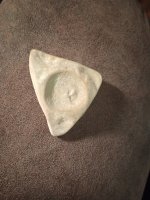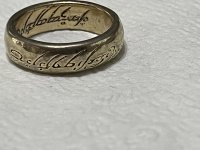Of the roughly 45,000 meteorites found in Antarctica so far, only around 100 are this size or larger. Guided by a 'meteorite treasure map', scientists have found an extraordinary specimen. This is one of the largest meteorites ever recovered from Antarctica!
Over the past two months, researcher Vinciane Debaille of the Free University of Brussels led a team of scientists across the barren terrain of Antarctica on a search for meteorites. Antarctica has long been considered an excellent spot to find space rocks. The cold, dry conditions preserve specimens for a long time, and their dark colour stands out quite well against the bright ice. Additionally, these treasures gather in specific regions, known as meteorite stranding zones, due to the effects of the weather and the movement of the ice. So how did Debaille and her team know where to look? They followed a unique 'treasure map' that led them straight to a 7.6 kg (17 lb) meteorite, which is now one of the largest specimens ever found in that region of the world.
Dr. Maria Valdes, from the Robert A. Pritzker Center for Meteoritics and Polar Studies at the University of Chicago's Field Museum, was one of the scientists on the expedition. In a Field Museum press release, she said that of the 45,000 meteorites recovered from Antarctica over the past century, only 100 or so have been of this size or bigger. "When meteorites fall on the Antarctic, they typically lodge themselves within the ice sheet and drift toward the oceans," Tollenaar wrote in an article for The Conversation last year. "This has led some to describe ice as a 'natural conveyor belt' for meteorites. At times, mountains occasionally hidden under the ice sheet may come in their way and redirect them toward the surface of the ice sheet."
According to Tollenaar, meteorite stranding zones are reasonably easy to identify due to the blue-tinged ice exposed when the surface snow is blown away from these locations by the wind. While not all 'blue-ice areas' contain meteorites, those meteorites that have been recovered from Antarctica tend to be found in them.
To turn this knowledge into a 'meteorite treasure map', the researchers first combed through records of blue-ice areas that have been searched, separating them into those that contained meteorites and those that didn't. Noting the properties of each location, temperature, ice flow, surface cover, slope, etc. They put computers to work identifying what combination of these properties made it more likely that meteorites would gather in those areas. Then, they applied that to other unexplored blue-ice areas to identify the most promising sites.
"Our research shows the accuracy of these predicted meteorite stranding zones is estimated to be over 80 per cent."
- Scott Sutherland Meteorologist/Science Writer



Over the past two months, researcher Vinciane Debaille of the Free University of Brussels led a team of scientists across the barren terrain of Antarctica on a search for meteorites. Antarctica has long been considered an excellent spot to find space rocks. The cold, dry conditions preserve specimens for a long time, and their dark colour stands out quite well against the bright ice. Additionally, these treasures gather in specific regions, known as meteorite stranding zones, due to the effects of the weather and the movement of the ice. So how did Debaille and her team know where to look? They followed a unique 'treasure map' that led them straight to a 7.6 kg (17 lb) meteorite, which is now one of the largest specimens ever found in that region of the world.
Dr. Maria Valdes, from the Robert A. Pritzker Center for Meteoritics and Polar Studies at the University of Chicago's Field Museum, was one of the scientists on the expedition. In a Field Museum press release, she said that of the 45,000 meteorites recovered from Antarctica over the past century, only 100 or so have been of this size or bigger. "When meteorites fall on the Antarctic, they typically lodge themselves within the ice sheet and drift toward the oceans," Tollenaar wrote in an article for The Conversation last year. "This has led some to describe ice as a 'natural conveyor belt' for meteorites. At times, mountains occasionally hidden under the ice sheet may come in their way and redirect them toward the surface of the ice sheet."
According to Tollenaar, meteorite stranding zones are reasonably easy to identify due to the blue-tinged ice exposed when the surface snow is blown away from these locations by the wind. While not all 'blue-ice areas' contain meteorites, those meteorites that have been recovered from Antarctica tend to be found in them.
To turn this knowledge into a 'meteorite treasure map', the researchers first combed through records of blue-ice areas that have been searched, separating them into those that contained meteorites and those that didn't. Noting the properties of each location, temperature, ice flow, surface cover, slope, etc. They put computers to work identifying what combination of these properties made it more likely that meteorites would gather in those areas. Then, they applied that to other unexplored blue-ice areas to identify the most promising sites.
"Our research shows the accuracy of these predicted meteorite stranding zones is estimated to be over 80 per cent."
- Scott Sutherland Meteorologist/Science Writer






